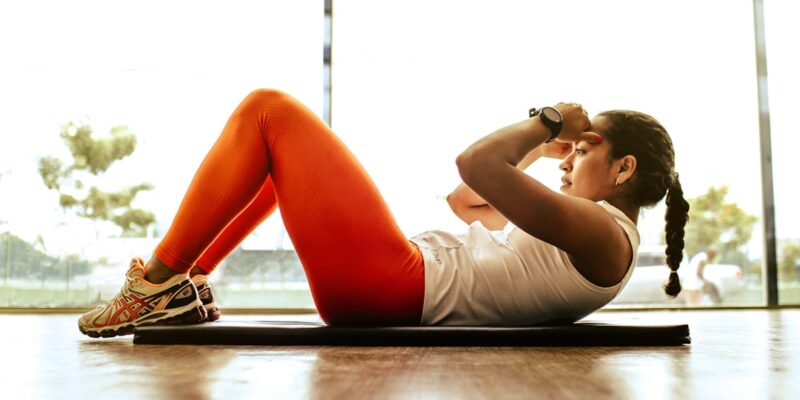
Boost Your Health and Happiness: The Benefits of Regular Physical Activity
Physical activity is an essential component of a healthy lifestyle. It not only helps to maintain a healthy weight, but it also has numerous benefits for overall health and well-being. Regular exercise can improve cardiovascular health, strengthen bones and muscles, reduce the risk of chronic diseases, improve mood, reduce stress and anxiety, boost cognitive function, enhance self-esteem and confidence, and promote a sense of well-being. With all these benefits, it is clear that physical activity is crucial for both physical and mental health.
Key Takeaways
- Regular exercise strengthens your body and reduces your risk of disease.
- Exercise improves your mood, reduces stress, and boosts brainpower.
- Regular physical activity enhances self-esteem, confidence, and sense of well-being.
- Guidelines for adults and children recommend a certain amount of physical activity.
- Choose activities you enjoy and that suit your lifestyle to make exercise a habit.
The Physical Benefits of Regular Exercise: Strengthening Your Body and Reducing Your Risk of Disease
Regular exercise has numerous physical benefits. It improves cardiovascular health by strengthening the heart and improving blood circulation. This reduces the risk of heart disease, high blood pressure, and stroke. Exercise also strengthens bones and muscles, reducing the risk of osteoporosis and improving overall strength and flexibility. Additionally, regular physical activity can help to maintain a healthy weight, which further reduces the risk of chronic diseases such as diabetes and certain types of cancer.
To achieve these physical benefits, it is important to engage in a variety of exercises that target different muscle groups. Cardiovascular exercises such as running, swimming, or cycling are great for improving heart health. Strength training exercises such as weightlifting or bodyweight exercises help to build muscle mass and increase strength. Flexibility exercises such as yoga or Pilates improve flexibility and range of motion. By incorporating a combination of these exercises into your routine, you can achieve optimal physical health.
The Mental Benefits of Regular Exercise: Improving Your Mood, Reducing Stress, and Boosting Your Brainpower
In addition to the physical benefits, regular exercise also has numerous mental benefits. Exercise has been shown to improve mood by increasing the production of endorphins, which are natural mood elevators. It can also reduce symptoms of depression and anxiety, as well as improve overall mental well-being. Exercise is a great stress reliever, as it helps to reduce the levels of stress hormones in the body and promotes relaxation.
Furthermore, regular physical activity has been shown to boost cognitive function and improve brain health. Exercise increases blood flow to the brain, which enhances memory, attention, and problem-solving skills. It also stimulates the production of new brain cells and improves the connections between existing cells. This can help to prevent age-related cognitive decline and reduce the risk of neurodegenerative diseases such as Alzheimer’s.
To achieve these mental benefits, it is important to engage in activities that you enjoy and that challenge your brain. Activities such as dancing, playing a musical instrument, or learning a new language can provide both physical and mental stimulation. Additionally, activities that require focus and concentration, such as yoga or tai chi, can help to calm the mind and improve mental well-being.
The Emotional Benefits of Regular Exercise: Enhancing Your Self-Esteem, Confidence, and Sense of Well-Being
| Emotional Benefits of Regular Exercise | Metric |
|---|---|
| Enhanced Self-Esteem | Increased feelings of self-worth and confidence |
| Improved Confidence | Greater belief in one’s abilities and potential |
| Increased Sense of Well-Being | Greater overall happiness and satisfaction with life |
| Reduced Stress and Anxiety | Lower levels of stress hormones and improved mood |
| Improved Cognitive Function | Better memory, focus, and mental clarity |
| Increased Energy and Vitality | More energy and stamina for daily activities |
Regular exercise has numerous emotional benefits. It can enhance self-esteem and confidence by improving body image and physical appearance. Exercise helps to build strength and endurance, which can boost self-confidence and make you feel more capable in other areas of life. It also releases endorphins, which are natural mood enhancers that can promote a sense of well-being.
Engaging in activities that you enjoy and that challenge you can help to enhance these emotional benefits. Activities such as team sports or group fitness classes provide social interaction and support, which can further boost self-esteem and confidence. Additionally, setting goals and achieving them through exercise can provide a sense of accomplishment and satisfaction.
How Much Physical Activity Do You Need? Guidelines for Adults and Children
The recommended amount of physical activity varies depending on age and fitness level. For adults, it is recommended to engage in at least 150 minutes of moderate-intensity aerobic activity or 75 minutes of vigorous-intensity aerobic activity per week. This can be achieved through activities such as brisk walking, cycling, swimming, or dancing. Additionally, it is recommended to engage in strength training exercises at least two days per week, targeting all major muscle groups.
For children and adolescents, it is recommended to engage in at least 60 minutes of moderate-to-vigorous intensity physical activity every day. This can include activities such as running, playing sports, or riding a bike. It is also important for children to engage in activities that promote bone health, such as jumping or skipping.
To incorporate physical activity into daily routines, it can be helpful to schedule it in advance and make it a priority. This can involve waking up early to go for a walk or jog, taking the stairs instead of the elevator, or scheduling exercise classes or sports activities after work or school. Additionally, finding activities that you enjoy and that fit into your lifestyle can make it easier to stick to a regular exercise routine.
Finding the Right Type of Exercise for You: Choosing Activities That You Enjoy and That Suit Your Lifestyle
Finding the right type of exercise for you is crucial for sticking to a regular routine. It is important to choose activities that you enjoy and that suit your lifestyle. This can involve trying out different types of exercises and activities until you find something that you truly enjoy.
If you prefer outdoor activities, you might enjoy running, hiking, or cycling. If you prefer group activities, you might enjoy team sports or group fitness classes. If you prefer solo activities, you might enjoy swimming, yoga, or weightlifting. The key is to find something that you look forward to doing and that fits into your schedule.
Additionally, it can be helpful to set goals and track your progress. This can provide motivation and help you stay on track with your exercise routine. Whether your goal is to run a marathon, lose weight, or simply improve your overall fitness, having a clear goal can help to keep you motivated and focused.
Overcoming Barriers to Exercise: Tips for Staying Motivated and Making Exercise a Habit
There are many common barriers to exercise, such as lack of time, lack of motivation, or lack of access to facilities or equipment. However, with some planning and determination, these barriers can be overcome.
One way to overcome the barrier of lack of time is to schedule exercise into your daily routine. This can involve waking up early to exercise before work or school, taking breaks during the day to go for a walk or do some stretching, or scheduling exercise classes or sports activities after work or school. By making exercise a priority and scheduling it in advance, you are more likely to stick to a regular routine.
Another way to overcome the barrier of lack of motivation is to find an exercise buddy or join a group fitness class. Exercising with others can provide motivation and support, as well as make the experience more enjoyable. Additionally, setting goals and tracking your progress can help to keep you motivated and focused.
If lack of access to facilities or equipment is a barrier, there are many exercises that can be done at home with little or no equipment. Bodyweight exercises such as push-ups, squats, and lunges can be done anywhere and require no equipment. Additionally, there are many online resources and apps that provide workout routines and exercises that can be done at home.
Exercise and Weight Management: How Physical Activity Can Help You Lose Weight and Keep It Off
Exercise plays a crucial role in weight management. It helps to burn calories and increase metabolism, which can aid in weight loss. Additionally, regular physical activity helps to build lean muscle mass, which increases metabolism and helps to maintain weight loss.
To incorporate exercise into a weight loss plan, it is important to engage in both cardiovascular exercises and strength training exercises. Cardiovascular exercises such as running, cycling, or swimming help to burn calories and increase heart rate. Strength training exercises such as weightlifting or bodyweight exercises help to build muscle mass and increase metabolism.
It is also important to combine exercise with a healthy diet for optimal weight loss. Eating a balanced diet that is rich in fruits, vegetables, whole grains, lean proteins, and healthy fats can provide the necessary nutrients for energy and recovery. Additionally, it is important to stay hydrated and avoid sugary drinks and snacks.
Exercise and Aging: How Regular Physical Activity Can Help You Stay Active and Independent as You Get Older
Regular physical activity is crucial for aging adults. It helps to maintain strength, flexibility, and balance, which can reduce the risk of falls and injuries. Exercise also helps to maintain bone density, which reduces the risk of osteoporosis. Additionally, regular physical activity can improve cognitive function and reduce the risk of age-related cognitive decline.
To incorporate exercise into an aging adult’s routine, it is important to choose activities that are safe and appropriate for their fitness level. Low-impact activities such as walking, swimming, or cycling are great options for maintaining cardiovascular health without putting too much stress on the joints. Strength training exercises such as weightlifting or resistance band exercises help to maintain muscle mass and strength. Balance exercises such as yoga or tai chi can help to improve balance and reduce the risk of falls.
It is also important for aging adults to listen to their bodies and make modifications as needed. This may involve reducing the intensity or duration of exercises, taking breaks when needed, or choosing activities that are less strenuous on the joints.
Making Physical Activity a Priority for a Healthier, Happier Life
In conclusion, physical activity is crucial for overall health and well-being. It has numerous benefits for both physical and mental health, including improved cardiovascular health, stronger bones and muscles, reduced risk of chronic diseases, improved mood, reduced stress and anxiety, increased cognitive function, enhanced self-esteem and confidence, and a sense of well-being.
To incorporate physical activity into your daily routine, it is important to find activities that you enjoy and that suit your lifestyle. This can involve trying out different types of exercises and activities until you find something that you truly enjoy. It is also important to set goals and track your progress to stay motivated and focused.
By making physical activity a priority in your daily life, you can reap the numerous benefits for your health and happiness. Whether it’s going for a walk, taking a dance class, or lifting weights at the gym, finding an activity that you enjoy and that challenges you can make all the difference in maintaining a healthy and active lifestyle. So get moving and make physical activity a priority for a healthier, happier life.
Looking for ways to enhance your physical activity routine? Check out this informative article on Wave Magnets, a website dedicated to promoting a healthy and active lifestyle. One of their recent articles discusses the benefits of incorporating resistance bands into your workout routine. These versatile and portable exercise tools can help you build strength, improve flexibility, and increase overall endurance. Discover how resistance bands can take your physical activity to the next level by clicking here.
FAQs
What is physical activity?
Physical activity refers to any bodily movement that requires energy expenditure. It can be done in various forms such as exercise, sports, household chores, or any other physical activity that requires movement.
What are the benefits of physical activity?
Physical activity has numerous benefits for both physical and mental health. It can help in weight management, reduce the risk of chronic diseases such as heart disease, diabetes, and cancer, improve bone and muscle strength, enhance mood and cognitive function, and improve overall quality of life.
How much physical activity is recommended?
The World Health Organization recommends that adults should engage in at least 150 minutes of moderate-intensity aerobic physical activity or 75 minutes of vigorous-intensity aerobic physical activity per week. Children and adolescents should engage in at least 60 minutes of moderate-to-vigorous physical activity per day.
What are some examples of moderate-intensity physical activity?
Moderate-intensity physical activity includes brisk walking, cycling, swimming, dancing, gardening, and household chores such as vacuuming or mopping.
What are some examples of vigorous-intensity physical activity?
Vigorous-intensity physical activity includes running, jogging, fast cycling, swimming laps, playing sports such as basketball or soccer, and high-intensity interval training.
What are some tips for incorporating physical activity into daily life?
Some tips for incorporating physical activity into daily life include taking the stairs instead of the elevator, walking or cycling to work or school, taking a walk during lunch breaks, doing household chores, and participating in sports or fitness classes. It is important to find activities that are enjoyable and sustainable for long-term adherence.

















